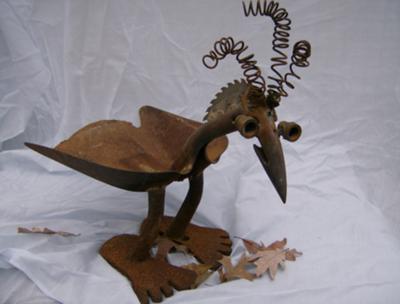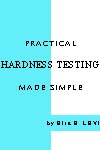|
Welding-cast-iron,for repair or fabrication.SOLUTIONS with Effective, Powerful Advice
Welding-cast-iron is the subject of this page. What is in here for me? What benefits can be found here? Essentially a short overview of problems concerning Welding-cast-iron. However as types and conditions of various cast irons can be very different, so could be the problems and the answers. For any questions on these subjects, write us by e-mail. Click on the Contact Us button in the NavBar at top left of every page.
Visit the NEW Page on Welding Overview, for a thorough
Welding cast iron is mainly used for repairing casting defects in the foundry, followed by salvaging of worn or broken castings in service, and finally for fabrication of welded assemblies.
If you did not yet find what you need, why not typing your question in the following Search Box?
Welding-cast-iron deals with classes known as Gray, Malleable and Nodular (or Ductile) according to typical appearance of their microstructure, which affects their properties. Cast irons are alloys of iron, carbon and silicon (may have over 2% carbon and 1-3% silicon), and may include specific amounts of other elements to achieve definite characteristics.
Properties of Cast Iron The properties sought for when selecting cast iron are usually economy, good castability even in complex forms, damping of vibrations, resistance to heat checking or heat shock, although strength may not be the primary consideration. Common applications examples are housings, enclosures, machine frames and bases, pipe fittings, clutch plates, brake drums, counterweights etc.
Are there problems in Welding-cast-iron? Cast iron is much less weldable than low carbon steel because it contains much more carbon and silicon, it is brittle and it tends to crack. A ductile material should be chosen as filler metal. Specially formulated cast iron electrodes are available. However, fillers based on nickel or bronze, although more expensive, are sometimes preferred for their increased ductility. If the weld has to be machined, regular filler metal for cast iron may result too hard. Selecting a filler metal as above, more ductile and more expensive, may solve the machinability concerns. In case of repair welding, one should know before Welding-cast-iron what are material and condition of the job at hand. It is common practice to apply preheating to castings and to provide protected slow cooling, with the purpose of reducing residual stresses and of avoiding cracking. Preheating (that is heating the part before welding) slows the cooling rate after welding, permitting the formation of less brittle structures. It also permits to the whole casting to contract together with the weld material, reducing residual stresses due to differential thermal gradients. Welding-cast-iron for repair may be prohibited in certain highly stressed areas of castings where welding failure is not acceptable. Welding-cast-iron on surfaces to be machined is permitted, if machining is possible at all. However requirements are set by the user who may or may not allow repairs in specific areas. In any case edge preparation or area preparation for Welding-cast-iron is most important. it should ensure complete removal of defects and provide room for satisfactory filler metal deposition with the minimum penetration allowed. Most popular...
Arc Welding is widely used for Welding-cast-iron. The most popular manual process employed is probably Shielded Metal Arc Welding (SMAW), with proper procedures involving preheat and postheat. One commonly uses nickel based, nickel-copper (Monel) or other bronze electrodes. Nickel electrodes and Cast iron electrodes and rods are classified in the following:
Tip!: it is advisable to follow recommendations as published by established suppliers, for Welding-cast-iron. A few tests should always be conducted before selecting a definite product for a repetitive job, in order to find the best solution for the given application under the prevailing circumstances, including welder's skill. Gas Tungsten Arc Welding can be used for Welding-cast-iron (gray iron). A higher preheat is usually recommended. Filler materials in form of rods but of chemical composition similar to those used for SMAW can be used. Also austenitic stainless streels have been used with direct current, straight polarity (electrode negative). Preheat temperature is usually higher. GTAW does not present any significant advantage vs. other less expensive processes. Gas Metal Arc Welding is better suited to Welding-cast-iron of Ductile and Malleable Iron types than for Gray Iron. It is however used when productivity gains are important. Manual Gas Welding or more properly oxyacetylene welding, is performed regularly with success for Welding-cast-iron in small castings. The characteristics of the flame can be controlled to be neutral, carburizing or reducing, as better adapted to the work on hand, but in any case the flame and its surrounding atmosphere can effectively protect the workpiece and the tip of filler metal, if used, from contamination from air. The Oxyacetylene Process can be used for Welding-cast-iron, generally for repair or modifications. One must use appropriate fluxes and suitable filler material like cast iron or bronze, if the difference in color is not objectionable for the application. This process is performed at lower temperatures but with higher heat input than arc welding and is usually slower. It is used with preheat and postheat treatments, and may develop less hard and brittle heat affected zone, which may be an advantage. Oxyacetylene welding is generally applied for Welding-cast-iron Gray and Ductile. It is not recommended for Malleable iron because it is likely to produce a wide heat affected zone of hard and brittle white iron. Braze-Welding can be performed instead of Welding-cast-iron, with proper filler metal, exploiting the advantage of using lower temperature copper based filler rods (bronzes) and a proper flux. To see a page on this process click on Braze Welding. The main objection may be that the weld will stand out because of the different color. UPDATED PAGE
Any questions on Welding-cast-iron or comments or feedback? Write them down and send them to us by e-mail. Click on the Contact Us button in the NavBar at top left of every page. An Article on Filler Metals for Welding-cast-iron was published in the April 2004 issue of Practical Welding Letter. An Article on Welding-cast-iron to Mild Steel was published in the Issue 25 of September 2005 of Practical Welding Letter. An Article on Welding Cast Iron to Alloy Steel was published (4) in Issue 89 of Practical Welding Letter for January 2011. An Article on Filler Metal for a Combustion Chamber (dealing with welding a Cast Iron inlet fitting, placed in a cooler area, to a 310 stainless Combustion Chamber) was published (4) in Issue 130 of Practical Welding Letter for June 2014. A new page is available on Casting-Repair.
A Bulletin with online Resources on Weld Repair of Castings was recently published. Click on Bulletin 105 to see it.
A Bulletin with online Resources on Cast Iron was recently introduced (8) in Issue 155 of Practical Welding Letter for July 2016. To receive regularly the Letter as it is published please subscribe.
Unsuitable processes... Welding-cast-iron is not suitable by Friction Welding, a solid state process with lower than melting temperature, because cast iron contains graphite which interferes with heating and because the material is not forgeable, which is a pre-condition for the process. Also Resistance Welding Process is not applicable to Welding-cast-iron. Repairing a crack in Cast Iron The following Section summarizes the information needed to repair, by Welding-cast-iron, a crack found in a Cast Iron body. It is the result of recurring requests on the part of our readers who asked for detailed answers to their problems. We deal primarily with Gray Cast Iron which represents the largest majority of general purpose castings. Other types of cast iron include Nodular (or Ductile), and Malleable Cast Iron, which were developed to provide more elaborated mechanical properties, suitable for specific purposes.
Disclaimer Please be advised that our presentation hereafter deals only with the most common class of gray cast iron where no special requirements are demanded from the material. In case of doubt readers are urged to investigate if their application is more specialized and then they should seek specific advice for action. Preparation It is understood that for Welding-cast-iron a cracked item it should be stripped of any accessories and parts assembled to it, and freed of any external loads. Assuming that the crack is limited in size, and the part is not broken in two or more separate pieces, one needs to drill a small stop hole (about 3 mm or 1/8") at each end of the crack and its branches. To find the end one should grind the area with sandpaper and look with a magnifying glass. Then the crack has to be cleaned by mechanical means like milling or hand grinding with a proper grinding wheel, to provide a V shape channel, with an opening of 60 degrees reaching the bottom of the crack, usually leaving a thin "land" to be completely melted during Welding-cast-iron. In thin sections, backing may be required to get a full penetration root pass. Thicker walls may need special shape channels. Completes the preparation a thorough cleaning of the area, especially if the casting is soaked with oil, grease, paint or other contaminants. A burnout should be done in a furnace for 15 minutes at 480 °C (900 °F), followed by energetic brushing to remove residues. Preheating Reasons for preheating for Welding-cast-iron were already pointed out in this page and in our Weld Preheating Page. Preheating should be performed in a furnace at 200 to 300 °C (400 to 600 °F) for at least an hour. For a small casting torch heating may be acceptable. Welding Shielded Metal Arc Welding (SMAW or stick) with covered electrodes is the most applied process. Filler metal available ranges from electrodes for cast iron (designated ECI) to Nickel containing electrodes (ENi-CI, The selection should be based essentially on experience, preferring the most economic material that permits welding without producing other cracks. For one occasional repair it is suggested that the Nickel electrodes be used, although more expensive, because they are more ductile and as such capable of absorbing larger stresses without cracking. The technique should concentrate in melting the minimum of base metal, by introducing the least amount of heat, with the smallest electrode at the least current, with thin weld beads. The weld is built up with additional beads (after slag removal) until finished, without cooling down. Post heating The welded part should then be allowed to cool down slowly under covering of insulating material or, preferably, be stress relieved immediately in a furnace at 600 to 650 °C (1100 to 1200 °F) for one hour and then furnace cooled. Other processes Oxyacetylene Welding is also possible, with the same preparation, but then, with proper filler metal, Braze-Welding can be performed instead, as per above reference. Accepted ASTM Specifications on Cast Iron are listed hereafter (please check to confirm the last edition): ASTM A47/A47M-99(2009)
ASTM A48/A48M-03(2012)
ASTM A74-09
ASTM A126-04(2009)
ASTM A159-83(2011)
ASTM A247-10
ASTM A278/A278M-01(2011) ASTM A319-71(2011)
ASTM A327/A327M-11
ASTM A 339 - Discontinued ASTM A395/A395M-99(2009) ASTM A 396 - Discontinued ASTM A436-84(2011)
ASTM A438 - Withdrawn ASTM A439-83(2009) ASTM A476/A476M-00(2009)
ASTM A518/A518M-99(2012)
ASTM A532/A532M-10
ASTM A536-84(2009)
ASTM A571/A571M-01(2011)
ASTM A602-94(2009)
ASTM A608/A608M-12 ASTM A644-09a
ASTM A667/A667M-87(2012)
ASTM A748/A748M-87(2012)
ASTM A823-99(2012)
ASTM A834-95(2011)
ASTM A842-11a
ASTM A874/A874M-98(2009)
ASTM A888-11
ASTM A897/A897M-06(2011) ASTM A942-95(2012)
NEW RESOURCES
Looking for more Online Reference Links? Click on Welding Resources
Big Foot Bird Feeder
Any questions or comments or feedback? Write them down and send them to us by e-mail. Click on the Contact Us button in the NavBar at top left of every page.
To reach a Guide to the collection of the most important Articles from Past Issues of Practical Welding Letter, click on Welding Topics.
Steel Welding

POWERED BY: Click on this Logo NOW! Watch - The Video: and also
Copyright (c) 2003-2008, 2009, 2010, 2011, 2012, 2013, 2014, 2015, 2016, 2017  See how Welding-cast-iron for repair or fabrication is readily performed with due care to reduce brittle constituents and to avoid cracks. Special fillers and procedures are requested.
|




